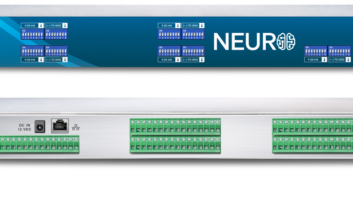
Fig. 1: A Moseley LanLink transmitter/receiver and a Tieline codec/mixer is all that is required for a remote broadcast. The laptop provides monitoring of the RF link. I have long thought that broadcast equipment manufacturers dropped the ball on bringing digital technology to the wireless remote pick-up unit arena. I wrongly presumed that digital RPU equipment in the 450 MHz UHF Broadcast Auxiliary spectrum would appear in the marketplace on the heels of the migration of the 950 MHz STL band to digital with products like the Moseley Starlink. If a POTS codec can function on the 300–3000 Hz bandwidth of a dial-up line why couldn’t this be used to digitally modulate a 450 MHz RPU channel?
Perhaps one reason little effort was put into digital RPU was the great reduction in the use of traditional RPUs due to the adoption of HD, primarily on FM. HD requires the station’s program audio to be delayed 7 to 10 seconds to synchronize the analog FM audio with the digital HD1 audio. The analog 450 RPU is a one-way medium that worked well for remotes (pre-HD) that could be monitored in real time by listening to the FM OTA (Off the Air). With the introduction of HD, a pre-delay mix-minus feed was now needed on site for the remote talent.
This is easily accomplished with wired digital codecs using IP or ISDN technology (or even POTS codecs), as these systems are bidirectional, allowing a mix-minus feed to the talent. Some broadcasters implemented an analog RPU channel in the reverse direction (often in another band like VHF RPU) to provide a pre-delay mix-minus to the talent. Special receivers were required to feed the talent the appropriate signal. Additionally, analog SCA channels can be employed to provide the reverse feed.
Manufacturers have put much energy into wireless digital codecs that are IP-based and utilize wireless 3G and 4G networks. The downside is the pay-per-minute air charges associated with using the services of wireless data providers. A second problem is the lack of guaranteed adequate bandwidth at large events where thousands are using their phones; wireless devices sometimes leave you with dropped connections, excessive latency and variable connectivity rates. Another negative is the dependency upon a third party (the cell carrier) to provide you connectivity with your studio — not always assured in times of emergency (often when you need it the most for field news-gathering).
A NEW APPROACH

Fig. 2: Scala TY-900 902 MHz antenna (small yagi), left, shown on remote truck mast perpendicular to existing 450 MHz yagi, right. I had the idea to utilize our own wireless IP network facilities to provide bidirectional connectivity to a remote broadcast. Wanting something of appreciable range, it occurred to me to employ a spare Moseley LanLink system operating in the unlicensed 902–928 MHz ISM spectrum. LanLinks are traditionally used as a piggyback to licensed, fixed, private microwave links in the 950 MHz aural STL spectrum, sharing the in-place STL TX and RX antennas, thus providing IP data to a transmitter site in addition to the existing STL audio link. Why not operate a LanLink independently and employ directional 902 MHz yagi antennas? The LanLink HS (the type of gear I had available) can provide up to 1024 kbps at a maximum distance of 30 miles (per Moseley) if line of sight can be established. For our test purposes I used existing IP codecs we had, specifically the Tieline Commander TL300B2 and the iMix G3 field mixer/codec (shown in Fig. 1, page 1), both of which provide stereo audio in both directions over IP.
I mounted a Scala TY-900 890–960 MHz yagi antenna, which provides 12 dBi gain, on the mast of our remote truck (see Fig. 2). It was placed at 90 degrees to our existing 450 yagi, both with vertical polarization. At the studio building rooftop (12 stories up), we had an existing RPU rotor with dual 450 yagis. A Scala TY-900 yagi was placed on the same mast (see Fig. 3).
Since the LanLink was to be used independent of any 950 MHz STL arrangement, I bypassed the diplex filters connecting directly to the Dual Gateway (field unit) and Access point (studio end). This eliminated any insertion loss. Use of the ISM license-free 902–928 MHz spectrum is limited to a maximum radiated power of 4 watts (+36 dBm EIRP) by the FCC. The maximum output power of the LanLink is 1 W (+30 dBm). Due to the 12 dBi gain of the antenna, it was necessary to reduce the output power of the LanLink to +24 dBm to keep the radiated power within FCC limits. The LanLink serial port or web page allows the output power to be reduced down to +20 dBm (0.1 W). Cable loss and connector loss should also be factored in.

Fig. 3: 902 MHz ISM yagi antenna sharing space on existing studio site mast and rotor used for traditional 450 MHz RPU receive. Our test location was at a shopping center east of our studio site where we “set up shop.” (See Fig. 4) The distance was approximately 10 miles. Aligning the studio rotor and the remote mast allowed maximum receive signal to be achieved at both ends resulting in a solid 1,024 kbps at the remote site. The Ethernet jack of the field LanLink was connected via a crossover cable to the Tieline codec. A small Ethernet switch could be provided to allow a laptop at the field site, allowing easy IP access to the studio and remote truck LanLinks, the IP codecs and the station’s WAN.
Once established, The IP link and codecs provided solid bidirectional program audio to and from the studio. Latency was low in both directions allowing easy dialog between the field talent and the studio (or with telephone callers, if required). The Tieline was operating at only 24 kbps leaving plenty of bandwidth for other devices in the field.
One interesting sidebar at the studio end (or where ever the “receive” location is) is that the IP audio from the remote location does not require that the studio codec be physically adjacent with the studio end LanLink. As long as the receive site has IP connectivity to the network the studio-end codec can be anywhere in the facility. In our case the Tieline is located on the first floor in the engineering rack room (TOC) while the LanLink is 10 floors up in our microwave room.
A laptop at the field end would allow IP access to view performance data of both ends of the LanLink hardware. IP connectivity would also allow remote site access to your automation system empowering field talent to view and control station audio or spot breaks.
Some applications of ISM equipment indicate a point-to-multipoint mode where potentially an omnidirectional antenna could be deployed to serve one or more field units. Such experiments were not undertaken. The higher gain of a directional yagi antenna will allow greater range in the point-to-point arrangement that was undertaken in this experiment.

Fig. 4: Remote truck with extended mast connected to studio via IP link at area mall 10 miles away. NO COST ALTERNATIVE
The use of the LanLink in a nontraditional manner has provided us another means to support remote broadcasts with digital connectivity. Management appreciates the no-expense airtime for this connectivity. Engineering appreciates the independent nature of the connectivity — not at the mercy of the cell carriers — particularly in times of disaster. Everyone appreciates the smallness of deployed hardware. Other wireless IP devices such as those offered by Ubiquiti (Rocket) would operate in a similar fashion. Perhaps the term “RPUoIP” (Remote Pick-up over Internet Protocol) is appropriate to describe this experiment.
Thanks to Ryan Krupa and Chris Tracy for their assistance.
Rick Walsh is market engineering manager for Clear Channel Media + Entertainment in Hartford, Conn.












